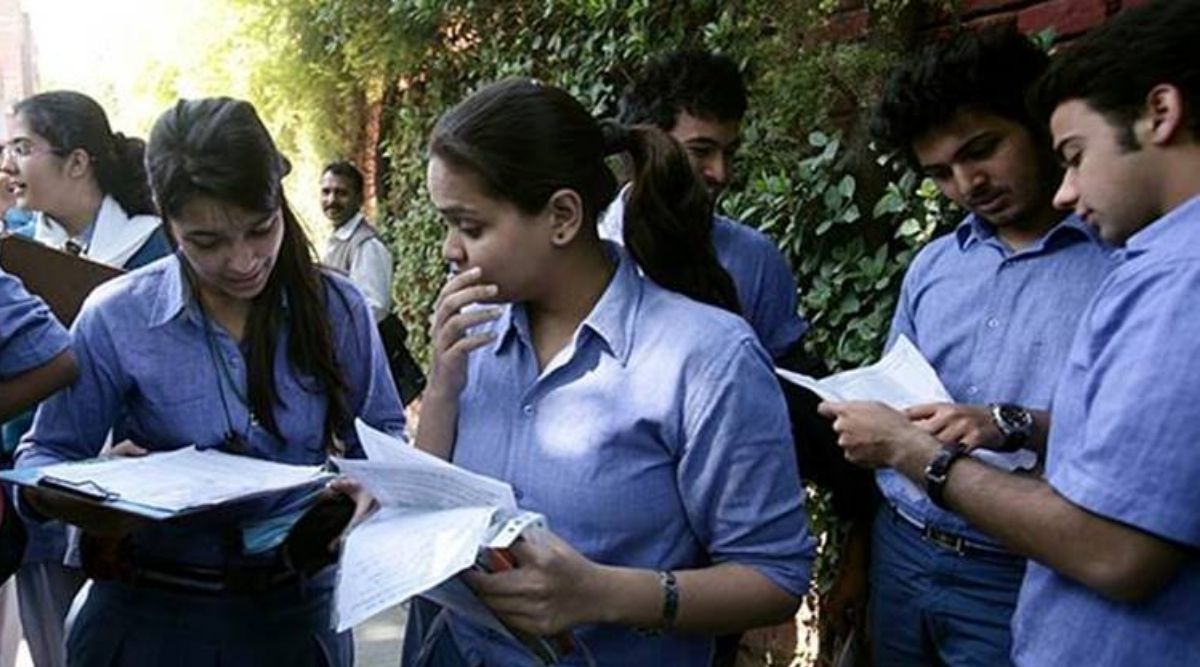China has been steadily climbing the world university rankings over the past decade as it continues to promote policies that strengthen the performance of its high-potential institutions on ranking metrics.
The indianexpress.com analysed rankings data of Quacquarelli Symonds (QS) and Times Higher Education (THE) over the past decade to find that Chinese higher education institutions are consistently improving their share in the top-500 pie even as the dominance of countries like the US and UK has waned in recent years.
In QS World University Rankings (WUR), China has increased its tally in the global top-500 list from 16 universities in 2012 to 26 in 2022. In fact, in the latest edition, for the first time, China is home to two of the world’s top 15 universities — Peking University (12th rank) and Tsinghua University (14th rank). More Chinese universities have also broken into the top 500 club of the Times Higher Education (or THE) Rankings in the last decade. China’s representation in the top 500 here has gone up from 11 in 2016 to 24 in 2022.
The performance of Indian universities pales in comparison. There were seven Indian universities in the top 500 of the QS WUR in 2012. That number has increased to just eight. Similarly, as many as 71 Indian institutes participated in the Times Rankings in 2022 compared to 69 in 2021, but only four figured in the top 500. In 2016, India had five universities in the top 500.
Meanwhile, first-world countries like the US and the UK continue to dominate the top 500 of world rankings but their share of universities in this group is shrinking. For instance, in the QS rankings, the US had 103 institutes in the top 500 in 2012, which came down to 87 in 2022. The UK, on the other hand, had 52 universities in the top 500 in 2012, which is down to 48 in 2022. Other countries such as Canada, France, Germany, Italy, Japan, and Spain, too, have seen their tally in the best 500 universities decrease over 10 years.
| Country performance in QS World Rankings | ||
| NATION | 2012** | 2022** |
| United States | 103 | 87 |
| United Kingdom | 52 | 48 |
| Germany | 41 | 31 |
| Japan | 24 | 16 |
| Australia | 23 | 26 |
| China | 16 | 26 |
| Canada | 20 | 17 |
| Russia | 7 | 17 |
| France | 21 | 11 |
| Italy | 15 | 14 |
| Netherlands | 13 | 13 |
| Spain | 13 | 12 |
| **Total universities in top 500 rankings | ||
Performing on research metrics
The relentless rise of Chinese universities in the QS Rankings has been powered by their performance on parameters such as academic reputation, employer reputation, and faculty-student ratio. However, it’s the ‘Citations per Faculty’ parameter, where China really shines. The ‘Citations per Faculty’ parameter represents the total number of citations received by all papers produced by an institution across a five-year period by the number of faculty members at that institution. Most Chinese universities — including Peking University (96.7 out of 100), Tsinghua University (98.1 out of 100), Shanghai Jiao Tong University (97.1), University of Science and Technology of China (99.9), and Nanjing University (96.1) — score very high on this metric.
“Where patterns emerge for any given country as a group, those that gain have typically demonstrated a fixed or increasing level of real-term investment in higher education and research over several years,” said Ben Sowter, QS Senior Vice President.
Sowter added, “Such investment programmes, tend to be high-profile and in addition to enabling the uplift of individual institutions, also draw attention to the country as a whole, either as a destination for students and faculty or as fertile ground for partnership and collaboration. The target in these cases is better, more competitive, more recognised universities – and in due time, the rankings tend to reflect this.”
As per Times ranking parameters in 2022, Chinese universities score high on teaching (eg: Peking University’s score of 91.4 out of 100), research (eg: Tsinghua University’s score of 95.7 out of 100) and industry income (eg Zhejiang University, Shanghai Jiao Tong University score a perfect 100 on this metric).
| Country performance in Times Rankings | ||
| NATION | 2016** | 2022** |
| United States | 122 | 109 |
| United Kingdom | 58 | 59 |
| Germany | 36 | 43 |
| Italy | 33 | 24 |
| Australia | 27 | 29 |
| China | 11 | 24 |
| Canada | 21 | 17 |
| France | 20 | 17 |
| South Korea | 11 | 10 |
| Netherlands | 13 | 13 |
| Japan | 11 | 8 |
| Russia | 7 | 6 |
| **Total universities in top 500 rankings | ||
Excellence initiatives’
Phil Baty, Chief Knowledge Officer, Times Higher Education, told indianexpress.com, that China’s gains in global rankings coincide with a series of state-sponsored decisions and policies (known as ‘excellence initiatives’) that are designed to improve academic research and, hence, consequently, boost the competitiveness of its leading universities.
“China’s is perhaps the most significant initiative in the world – for three decades now it has been supporting a relatively small group of universities with a major injection of additional funding, but also a range of policies to support excellence in higher education, including, for example, policies to attract leading Chinese scholars who had established careers abroad to return to China and help strengthen their universities, and policies to support the development of strong research cultures and incentives to publish research in the world’s leading international journals,” said Baty.
China has also substantially increased funding for its universities during the past decade. Between 2012 and 2021, the Chinese government is now spending twice the amount it did on higher education — from $24 billion to $47 billion.
| Performance of SAARC countries in world rankings | ||||
| NATION | QS 2012 | QS 2022 | TIMES 2016 | TIMES 2022 |
| India | 7 | 8 | 5 | 4 |
| Pakistan | 1 | 3 | 0 | 0 |
| Afghanistan | 0 | 0 | 0 | 0 |
| Bangladesh | 0 | 0 | 0 | 0 |
| Bhutan | 0 | 0 | 0 | 0 |
| Maldives | 0 | 0 | 0 | 0 |
| Nepal | 0 | 0 | 0 | 0 |
| Sri Lanka | 0 | 0 | 0 | 0 |
**Total universities in top 500 rankings
Filling the gap
Despite a huge number of international students choosing to study in China, its universities have failed to achieve high scores in the international student ratio parameters in both QS and Times world rankings.
China still sends most of its students abroad for study, mainly to universities in the West. “But, it is now very competitive in attracting international students as some of its universities now compete with the best in the world,” added Baty of Times Higher Education.
Akshay Chaturvedi, Founder and CEO, Leverage Edu, also told indianexpress.com that China and Russia have had the largest outbound student population over the last two to three decades, as a result of which they are now in a phase where top universities want to set up domestic shops.
“This led to more investment, more competition, and many newer universities—all of which in turn attract the world’s best faculty, including a lot of returnees. Second, both China and Russia, and more prominently the former, have demonstrated great focus in mapping higher education to the country’s macro focus areas i.e not doing everything under the sun and instead focusing on subjects of study where the country actively requires more future talent, like manufacturing previously and hard-tech now,” added Chaturvedi.
Rohit Kumar Yadav, a fourth-year MBBS student at Shihezi University, told indianexpress.com that most students who opt to study at a Chinese university pursue MBBS courses. The situation is similar at Russian universities that mostly attract medicine students.
“One of the reasons Indians flock to China to pursue MBBS degrees is the low tuition fee. The average annual fee for MBBS courses in China is 21,000 Chinese Yuan (Rs 2.5 lakh), whereas the annual fee at an Indian private medical college ranges from Rs 4 lakh to Rs 20 crore. Another reason could be the cutthroat competition for a high rank in the NEET-UG (National Eligibility cumEntrance Test-Undergraduate), where over 16 lakh students take the exam for over 83,000 MBBS seats,” said Yadav.
!function(f,b,e,v,n,t,s)
{if(f.fbq)return;n=f.fbq=function(){n.callMethod?
n.callMethod.apply(n,arguments):n.queue.push(arguments)};
if(!f._fbq)f._fbq=n;n.push=n;n.loaded=!0;n.version=’2.0′;
n.queue=[];t=b.createElement(e);t.async=!0;
t.src=v;s=b.getElementsByTagName(e)[0];
s.parentNode.insertBefore(t,s)}(window, document,’script’,
‘https://connect.facebook.net/en_US/fbevents.js’);
fbq(‘init’, ‘444470064056909’);
fbq(‘track’, ‘PageView’);







